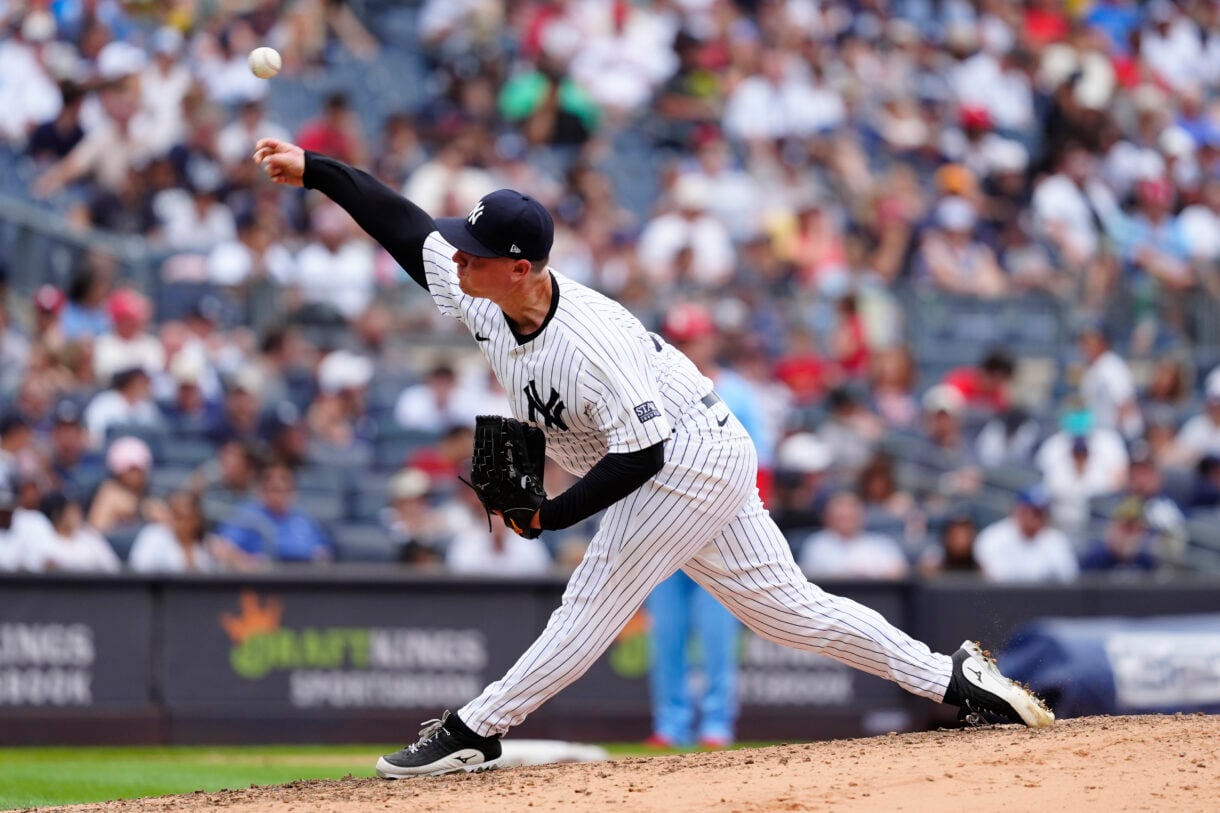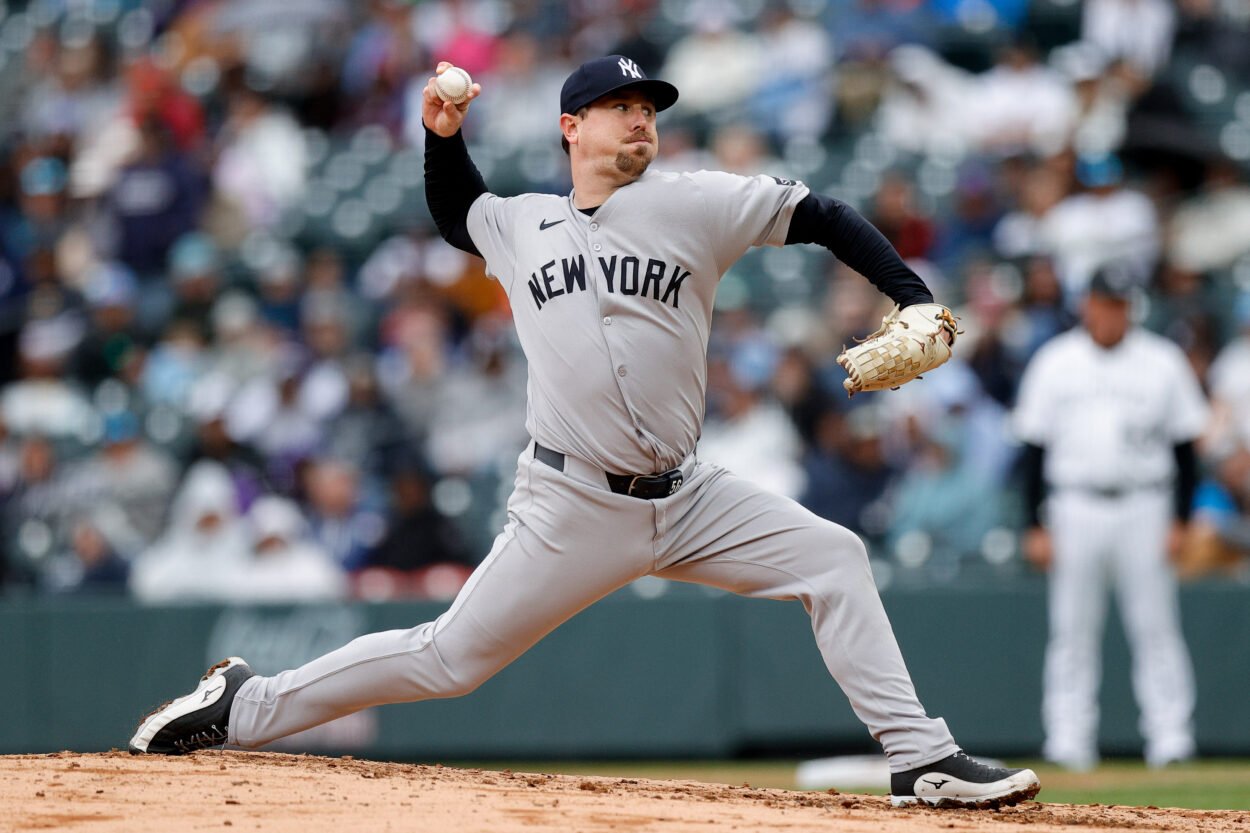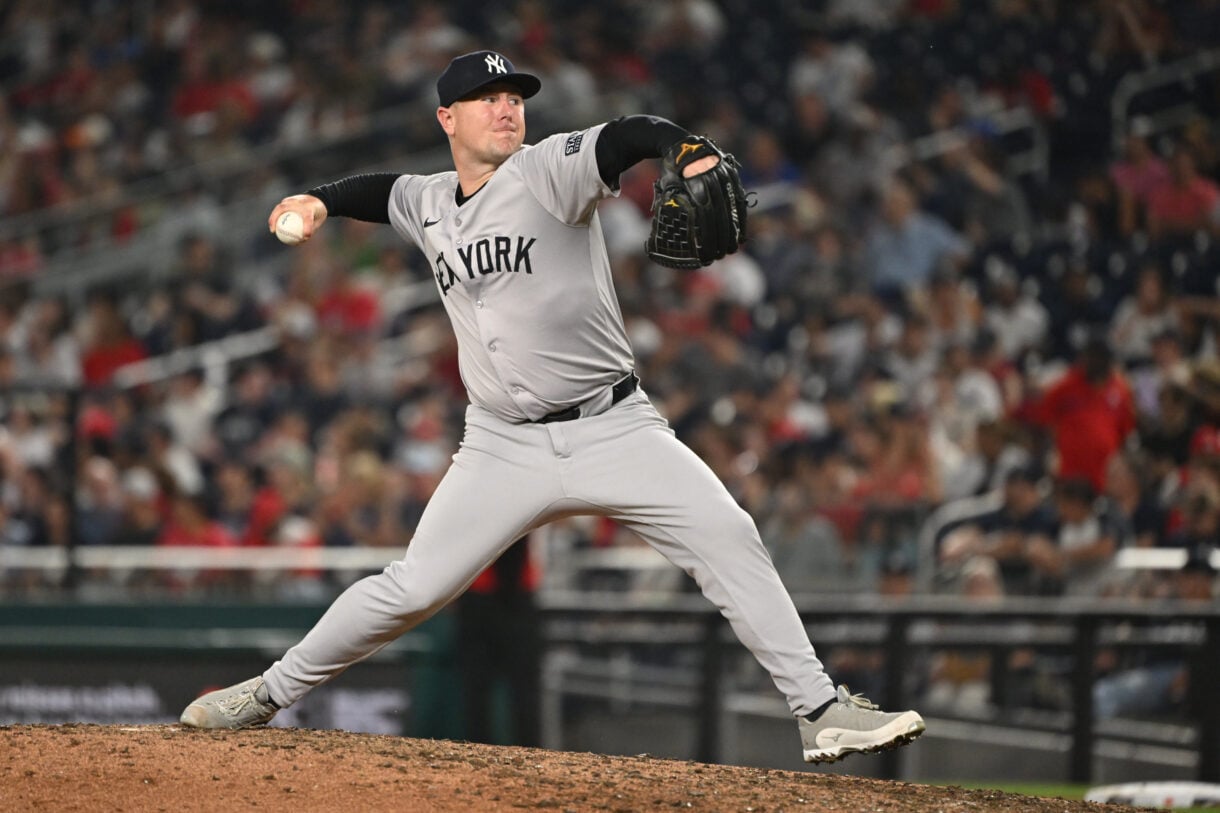
Sometimes a bullpen arm arrives with the kind of metrics that make evaluators lean forward a little. That was the case when the New York Yankees traded for Mark Leiter Jr. before the 2024 deadline, a move driven less by surface results and more by the numbers lurking beneath. On paper, he looked like the kind of pitcher who could thrive in a sharper defensive environment and a more matchup-driven system. In practice, the gap between theory and reality never closed.
What the Yankees Thought They Were Getting
The Yankees didn’t bring Leiter in because of his 4.21 ERA with the Cubs. They brought him in because that ERA sat miles above his 2.70 expected ERA and a standout 2.12 FIP. When a pitcher’s peripherals look that strong, it usually tells you the runs allowed column is the outlier, not the talent. FIP, which strips away the noise of defense and ballpark quirks, is a stat the Yankees value heavily. They saw a pitcher whose sinker-splitter combo created uncomfortable at-bats and whose breaking stuff took sharp, late turns that fit perfectly in their bullpen puzzle.
The bet wasn’t wild. It was the kind of calculated gamble a front office should make. But the upside never arrived.

The Production Never Turned
Once he put on the Yankees uniform, Leiter’s expected rebound turned into something closer to a stubborn repeat. His 4.98 ERA in pinstripes in 2024 wasn’t a complete disaster, but the 5.24 FIP undercut the story the team hoped to tell. Instead of the peripherals correcting the ERA, the ERA dragged the peripherals in the wrong direction. Then came 2025, a chance at a reset, and the pattern reverted again: a respectable 3.55 FIP paired with a 4.84 ERA.
That split became the most defining part of his tenure. Every outing seemed to hang in that awkward middle ground where the strikeouts came, but the results on the scoreboard didn’t match the expected results. Some pitchers live their entire careers in that space. They fool the models, they frustrate their teams, and they linger longer than expected because the numbers promise something that the innings don’t provide.
Where the Relationship Broke Down
Leiter’s strikeout rates remained impressive. A 31.7 percent mark in 2024 and a still-strong 24.7 percent clip this year will catch anyone’s attention. The problem was everything else: the command that wavered just enough to invite trouble, the long balls that arrived at the worst times, the lack of the clean, efficient inning that a contender leans on in September.

At a certain point, the Yankees needed reliability more than potential. Yankeesource summed up the front-office mindset bluntly when he noted the team could no longer afford to wait for the underlying numbers to finally become reality. That sentiment carried weight. A team with championship expectations cannot run back another year hoping a 34-year-old reliever suddenly aligns his ERA with his FIP.
It wasn’t a dramatic breakup. Just a practical one.
Looking at What Comes Next
The Yankees non-tendered five pitchers on Friday, and Leiter’s name stood out less because of the surprise and more because of what his departure represents. This front office values data, leans into projections, and tries to stay ahead of the curve. But even the most progressive team needs innings that translate to wins, not just models that project them.
Leiter will land somewhere else. Teams are always searching for swing-and-miss relief, and strikeouts still hold currency. Maybe another club finds the small tweak that lets his command tighten just enough to change the shape of his outings. Or maybe he remains one of those pitchers whose FIP always sparkles more brightly than his ERA.
For the Yankees, though, the time had run out. They needed a bullpen they could trust, not one they needed to rationalize. And at some point, even the most promising metrics stop being a reason to hold on.
